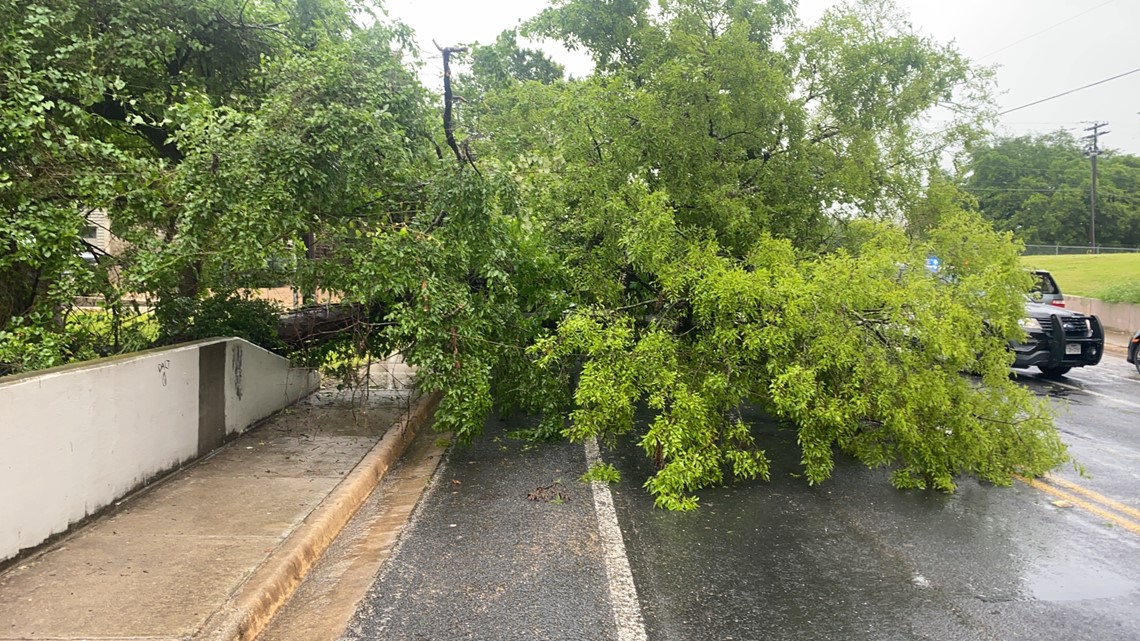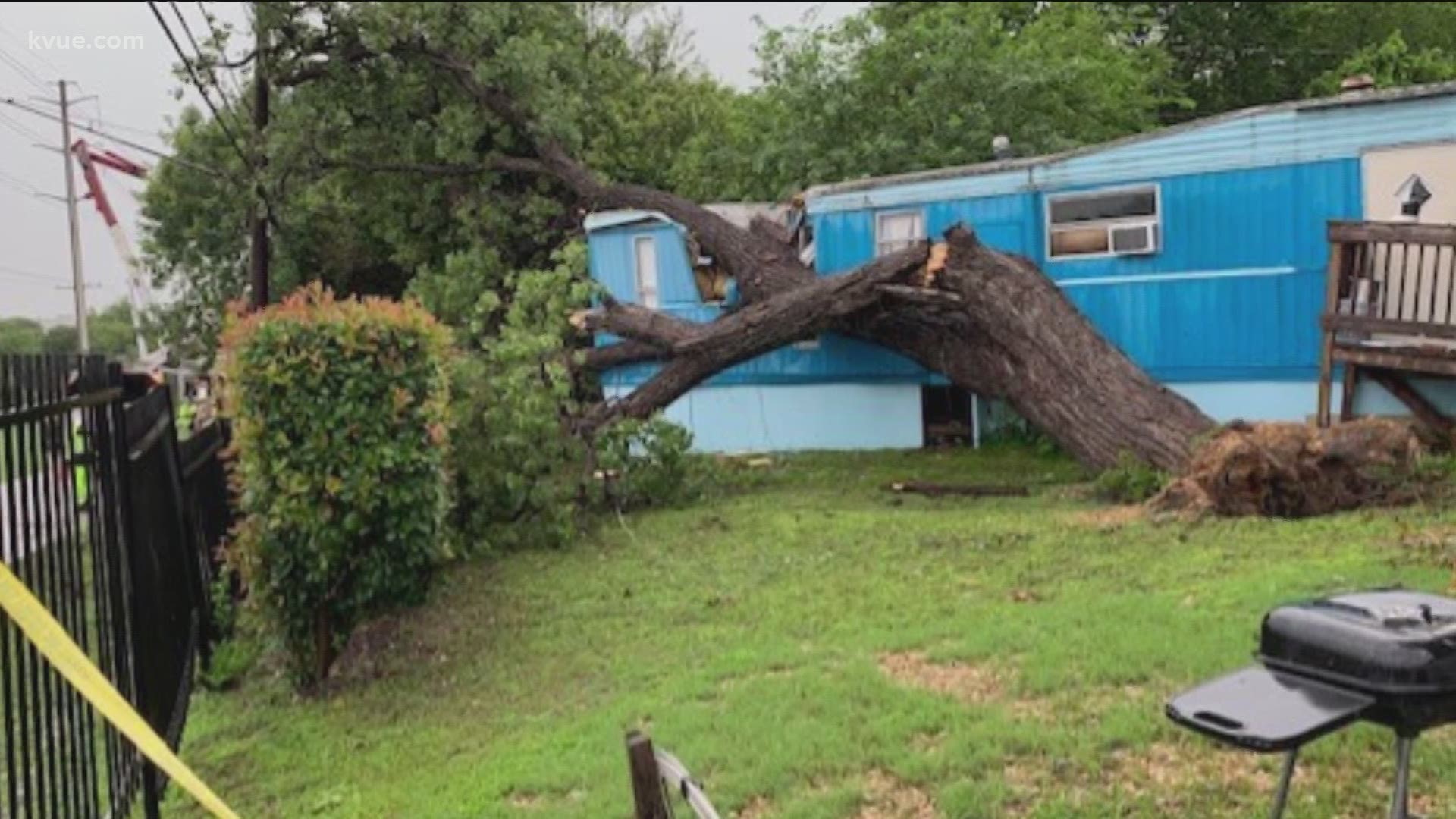AUSTIN, Texas — When storms roll through, trees are often broken or damaged, causing a blockage to roads or damage to property.
Austin Energy on Thursday tweeted out photos of an example of tree branches falling onto power lines and/or property, which caused an outage. Cleaning up the mess is a process involving multiple teams in order to restore power, get rid of debris, etc.
The City told KVUE that Street and Bridge Operations crews (SBO) are working 24 hours a day to respond to 300-plus Customer Service Requests (CSR’s) that have been received through 311 since the storm event on Friday, May 28. The majority of those calls have been tree-related (i.e. either entire trees, tree branches or tree debris) blocking the right-of-way of streets, the City said.
The City's forestry group has also responded to some of the tree CSR’s.
Forestry crews are called in when there has been a larger tree failure, like when a larger branch or the entire tree has fallen. According to officials, SBO crews will respond first to the CSR to ensure the street is clear, and then if it’s a larger failure, forestry crews go out to inspect the tree and ensure that it is no longer a threat to the right-of-way.
Since Friday's storm, forestry crews have inspected about 30 tree failures per day.
With rain still in the forecast, City officials told KVUE it has triple the normal number of crew members on standby to respond to calls on the weekends.
The City recommends that residents call 311 to report any issues with the public right-of-way, which includes streets and sidewalks, to get the fastest response. Crews will be responding around the clock to these reports.
Trees in Austin with a diameter of 19 inches (circumference of 60 inches) or greater are protected under City Code and require review by the City Arborist to be removed. When damaged trees pose an immediate risk to safety (such as trunks with newly opened cracks, hanging branches, or visible uprooting) property owners may take immediate measures to correct that threat, according to City officials. If a tree is removed, they need to submit a retroactive permit within seven days of the work.


Hazardous conditions must be well-documented by photographs, which should be submitted with the permit application. The City Arborist has a process for permitting the removal of trees that are dead, diseased, or pose an imminent hazard.
For more information about rules associated with removing protected trees in Austin, see Section 25-8-622 of the Land Development Code or visit http://austintexas.gov/page/tree-reviews-and-permitting.
Potholes or other street failures caused by the rain and water ponding are the second most common CSR, according to the City.
PEOPLE ARE ALSO READING:

